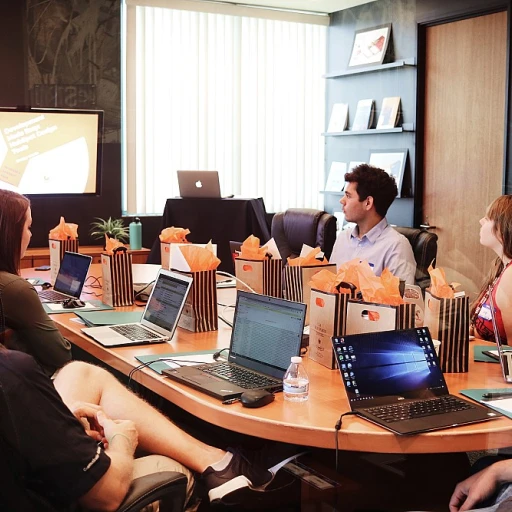
Understanding the Growth Mindset
Embracing a Growth Mindset
Understanding the growth mindset is crucial for leaders aiming to foster a culture of continuous improvement and innovation. A growth mindset, a term popularized by psychologist Carol Dweck, refers to the belief that abilities and intelligence can be developed through dedication and hard work. This mindset contrasts with a fixed mindset, where individuals believe their talents are innate and unchangeable.
In organizations, cultivating a growth mindset can lead to significant benefits. Employees with a growth mindset are more likely to embrace challenges, persist in the face of setbacks, and see effort as a path to mastery. This attitude not only enhances personal development but also contributes to the overall success of the team and the organization.
Creating an Environment for Growth
Leaders play a pivotal role in shaping a mindset culture that encourages learning and development. By creating an environment where team members feel safe to take risks and learn from their mistakes, leaders can promote resilience and innovation. Providing learning opportunities and constructive feedback is essential in this process.
Organizations that prioritize continuous learning and professional development often see higher levels of employee engagement and satisfaction. This commitment to growth can be a driving force behind long-term success and adaptability in a rapidly changing business landscape.
Opportunities for Continuous Improvement
To effectively implement growth mindset strategies, leaders must focus on fostering a culture that values continuous improvement. This involves encouraging team members to seek out learning opportunities and engage in problem-solving activities. By doing so, leaders can help their teams develop the skills necessary to overcome challenges and seize new opportunities for growth.
For more insights on how leaders can enhance team dynamics and facilitate peer learning, consider exploring enhancing team dynamics through peer learning facilitation.
Leadership's Influence on Culture
Leadership's Role in Shaping Culture
Leadership plays a pivotal role in shaping the culture of an organization. When leaders embody a growth mindset, they set the tone for the entire team, encouraging an environment where learning and development are prioritized. This mindset is not just about personal growth; it's about fostering an atmosphere where every team member feels empowered to pursue continuous improvement.
Creating an Environment for Growth
Leaders who focus on cultivating growth within their teams understand the importance of creating a supportive environment. This involves providing learning opportunities and encouraging employees to take on challenges that push their boundaries. By promoting a culture of continuous learning, leaders help their teams develop resilience and adaptability, essential traits for navigating the complexities of modern business.
Encouraging Feedback and Development
Constructive feedback is a cornerstone of a growth mindset culture. Leaders who prioritize open communication and regular feedback sessions help team members understand their strengths and areas for improvement. This approach not only aids in personal development but also enhances team cohesion and innovation. By fostering a culture where feedback is seen as an opportunity for growth rather than criticism, leaders can drive long-term success.
Fostering Innovation and Problem Solving
Innovation thrives in environments where leaders encourage creative problem-solving and risk-taking. A growth mindset culture supports this by allowing employees to experiment and learn from their mistakes without fear of failure. Leaders who champion this approach help their organizations stay competitive and agile, ready to seize new opportunities as they arise.
For more insights on fostering a growth mindset culture, explore engaging outdoor activities for youth groups that can inspire team building and creative thinking.
Essential Skills for Chief Human Resources Officers
Key Competencies for Chief Human Resources Officers in Promoting a Growth Mindset Culture
Chief Human Resources Officers (CHROs) play a pivotal role in nurturing a growth mindset within their organizations. Their expertise and leadership are instrumental in creating an environment where continuous learning and development can thrive. As the architects of the organizational culture, CHROs need a distinct set of skills to effectively champion a mindset of growth.- Leadership Development: CHROs must be adept in leadership development, fostering a culture where leaders can drive growth and inspire their teams. They should craft strategies that empower leaders to guide their teams effectively, ensuring that both individual and collective growth is prioritized.
- Emphasizing Continuous Learning: Promoting a culture of continuous learning is essential. CHROs should facilitate access to various learning opportunities and resources to encourage all employees to engage in continuous improvement and skill development.
- Feedback and Communication: Constructive feedback mechanisms are crucial for growth. Creating open channels for communication and feedback helps employees and teams identify areas for improvement and capitalize on opportunities for development.
- Innovation and Adaptability: In a rapidly changing business environment, the ability to foster innovation and adaptability is vital. CHROs should encourage their organizations to embrace new ideas and approaches, paving the way for resilience and long-term success.
- Creating a Supportive Environment: A supportive and inclusive culture enhances the effectiveness of a growth mindset. CHROs should work towards building an environment that encourages collaboration, learning, and mutual respect, enabling team members to thrive.
Implementing Growth Mindset Strategies
Strategies to Foster a Growth Mindset
Implementing a growth mindset within an organization requires deliberate strategies that align with the company’s culture and goals. Leaders play a pivotal role in this transformation, as their approach can significantly influence the mindset of their teams. Here are some effective strategies to cultivate a growth mindset culture:
- Create an Environment of Continuous Learning: Encourage employees to engage in learning opportunities that promote personal and professional development. This can be achieved through workshops, seminars, and online courses that focus on leadership development and problem-solving skills.
- Encourage Constructive Feedback: Feedback is essential for growth. Leaders should foster an environment where constructive feedback is welcomed and seen as an opportunity for improvement rather than criticism. This approach helps team members to embrace challenges and view them as opportunities for growth.
- Promote Innovation and Creativity: Organizations should encourage innovation by allowing employees to experiment and take calculated risks. This not only fosters a culture of innovation but also empowers employees to think creatively and develop resilience in the face of setbacks.
- Facilitate Peer Learning: Encourage team members to learn from each other through peer learning initiatives. This can enhance team dynamics and promote a culture of continuous improvement. Leaders can facilitate this by organizing regular team-building activities and knowledge-sharing sessions.
- Recognize and Celebrate Success: Acknowledge the efforts and achievements of employees. Celebrating success reinforces positive behavior and motivates employees to continue striving for excellence. Recognition can be a powerful tool in cultivating a mindset that values growth and development.
By implementing these strategies, leaders can create an environment that supports continuous learning and development, ultimately leading to long-term success for the organization. The journey to fostering a growth mindset is ongoing, and it requires commitment from both leaders and team members to overcome challenges and seize opportunities for growth.
Overcoming Challenges in Cultivating a Growth Mindset
Embracing Setbacks as Learning Opportunities
One of the primary hurdles in cultivating a growth mindset is transforming how setbacks are perceived within organizations. It is essential for leaders to model resilience, emphasizing that challenges are invaluable learning opportunities rather than failures. By doing so, leaders inspire their teams to view setbacks as stepping stones toward continuous improvement and professional development.
Fostering a Culture of Continuous Feedback
Constructive feedback plays a significant role in shaping a learning environment. When leaders cultivate an environment where feedback is openly shared, they encourage team members to embrace vulnerability and actively engage in their learning journey. This feedback-driven culture invites innovation, allowing organizations to thrive through continuous learning and development.
Nurturing Resilience in Team Members
In order to maintain a mindset culture that embraces growth, leaders must continuously work at developing resilience within their teams. This can be achieved by providing learning opportunities tailored to address both individual and collective objectives. As team members grow more resilient, they become adept at problem solving and more willing to take risks, driving the organization towards long-term success.
Creating Growth-Focused Learning Environments
To effectively foster a growth mindset, it's crucial to establish an environment that champions learning and development. A mindset leadership approach empowers employees by nurturing a platform for continuous learning and development. Here, leaders create spaces for experimentation, encouraging employees to explore new ideas without apprehension. These dynamic environments ultimately shape the organization's capacity for success and innovation.
Measuring the Impact of a Growth Mindset Culture
Assessing the Effectiveness of a Growth Mindset Culture
Measuring the impact of a growth mindset culture in organizations involves understanding how leadership influences the overall environment. Here are key elements to consider:- Feedback Mechanisms: Regular, constructive feedback is crucial for fostering continuous improvement and development among team members. It helps employees recognize their capabilities and areas for growth, reinforcing a mindset that values learning and resilience.
- Employee Development and Learning Opportunities: Evaluate the availability and effectiveness of learning and development programs designed to enhance professional growth. Ensure that the organization promotes continuous learning and mindset leadership, offering team members various opportunities to advance.
- Impact on Innovation and Problem Solving: Assess how a growth mindset influences the team’s ability to innovate and solve problems. A dynamic environment that encourages creativity and encourages leaders to support mindset development can lead to significant strides toward success.
- Culture and Environmental Changes: Observe changes in the workplace culture influenced by mindset leaders. Leaders who actively cultivate growth mindset strategies can transform the workplace into a more supportive and long-term growth-focused environment.
- Performance Metrics and Success Indicators: Implement tools to track continuous improvement and success. Measure key performance indicators to determine how a growth mindset contributes to overall organizational achievements.













